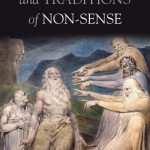We run our website the way we wished the whole internet worked: we provide high quality original content with no ads. We are funded solely by your direct support. Please consider supporting this project.
The Cruciform Center Part 1: How Matthew, Mark and Luke Reveal a Cruciform God
In the previous series of posts I’ve argued that a merely “Christocentric” approach to God is too general, as can be shown by the widely different conceptions of God people arrive at, despite their claim to be “Christocentric.” The confession that Jesus reveals what God is like is simply too abstract, for it leaves too much room for people to impose a preconceived concept of God onto him. I’ve instead argued that the NT itself gives us a much more specific criteria for understanding God when it reveals that “God is love” (I Jn 4:8) while defining “love” by pointing us to the cross (I Jn 3:16). This, I contend, is the thematic center of everything Jesus was about. So, instead of adopting a “Christocentric” approach, I submit that we ought to adopt a “crucicentric” approach. As we shall see, this more specific perspective changes everything.
The cross-centered understanding of God that I’m proposing is both new and (therefore) controversial. As such, the burden of proof is on me to demonstrate its validity. So, over the next four blogs I want to demonstrate how the centrality of the cross is reflected throughout the NT. I’ll refer to this series as “The Cruciform Center.” In Part I, which is the remainder of this blog, I’ll how the Synoptic Gospels display a cruciform center. In Part II I’ll show this with regard to the Gospel of John. Part III will demonstrate the centrality of the cross in Paul, and, finally, Part IV will show how the cross is at the center of the Book of Revelation.
To begin, scholars have frequently noted that the Synoptic Gospels are structured around the Passion narrative. The New Testament scholar Martin Kahler isn’t overstating the case when he famously declared that “…one could call the Gospels passion narratives with extended introductions.”[1] The narrative of these Gospels points forward to, and climaxes in, the revelation of Jesus on the cross. This conclusion is supported in four ways:
1. Each Gospel depicts Jesus trying to break through his disciple’s preconceived notions about the Messiah by teaching them that he had to go to Jerusalem to “suffer many things” and to be executed (Mt 16:21; 17:23; 20:19; 26:2; Mk 10:32-34; Lk 17:25; cf. 24:7).
2. As I mentioned above, the way Jesus redefined power points to a cross-centered understanding of power. He repeatedly stated that he had not come into the world to “be served, but to serve, and to give his life as a ransom for many” (Mt 20:28; Mk 10:45). This statement anticipates the kind of power revealed on the cross. Instead of self-promoting power that the devil offered in the temptation narratives (Mt 4:9; Lk 4:6), the Gospels define the power of God to be his self-sacrificial love.
3. Jesus’ commands and teachings reflect a cruciform ethic. He taught his disciples that the one who served is greater in the kingdom than the one who is served, and the last would be first and the first would be last (Mt 20:16, Mk 10:31, Lk 13:30). So too, Jesus taught that the precondition for being considered a disciple is that one must be willing to “pick up their cross and follow [him]” (Luke 9:23). And, most significantly, Jesus taught that his disciples were to love and serve people indiscriminately – like the rain falls and the sun shines, for this is how their heavenly Father loves (Mt 5:44-45; Lk 6:27-35). This is why Jesus taught that they were to love their enemies and to swear off all violence “so that [they] would be children of the Father in heaven” (Mt 5:45). He is teaching that disciples can only be considered children of the Father when they reflect his loving character, and it turns out to be the kind of character that finds its quintessential expression on the cross, when God suffered on behalf of all humans.
4. Finally, Jesus’ actions conform to his cruciform teaching. For example, the fact that Jesus dared to fellowship with those who were most harshly judged by the religion of his day and who were considered abandoned by God – the prostitutes, tax collectors and other sinners – clearly anticipates the cross, when Jesus fully entered into the God-forsakenness of all humans that results from sin.
It’s evident that for the Synoptic Gospels, Jesus’ life and teachings reflect the same character that is reflected in his self-sacrificial death. Everything Jesus was about ultimately expressed God’s enemy-embracing, self-sacrificial character. This is precisely what we should expect if Jesus reveals that “God is love,” and if love is defined by the cross. And this is why I claim that the cross functions as the thematic center of everything Jesus was about.
In the next post we’ll see that the same holds true of the Gospel of John, though it is expressed in slightly different ways.
[1] M. Kähler , The So-Called Historical Jesus and the Historic Biblical Christ, trans. C. E. Braaten (Philadelphia: Fortress, 1964 [1896]), 80, n.11.
Related Reading

Racism: Why Whites have Trouble “Getting It”
I’m a member of a special task group on racial reconciliation that consists of a dozen or so pastors from around the Twin Cities. We’ve been meeting periodically for the past year or so in order to strategize how to help the Church of the Twin Cities as a whole move forward in racial reconciliation.…

Overview of Crucifixion of the Warrior God
Greg reviewed the content of his new book, Crucifixion of the Warrior God, as a part of the Woodland Hills Church Covenant Partner gathering on March 5, 2017. If you want a fairly succinct synopsis of the thesis of his book, look no further. Ten years ago, Greg set out to write a book justifying the…

Christ-Centered or Cross-Centered?
The Christocentric Movement Thanks largely to the work of Karl Barth, we have over the last half-century witnessed an increasing number of theologians advocating some form of a Christ-centered (or, to use a fancier theological term, a “Christocentric”) theology. Never has this Christocentric clamor a been louder than right now. There are a plethora of…

God of Sense and Traditions of Non-Sense
As the title suggests, in his book, God’s Problem: How The Bible Fails to Answer Our Most Important Question – Why We Suffer, Bart Ehrman argues that the Bible has nothing compelling to say about the problem of evil. Well, I just put down a beautifully written four-hundred and fifty page book that compellingly argues…

Lighten Up: Jesus Makes Things Hard
Maybe Mark Driscoll is on to something. I guess Jesus really does want to make someone bleed. ;)

Does the Old Testament Justify “Just War”?
Since the time of Augustine, Christians have consistently appealed to the violent strand of the Old Testament to justify waging wars when they believed their cause was “just.” (This is Augustine’s famous “just war” theory.) Two things may be said about this. First, the appeal to the OT to justify Christians fighting in “just” wars…

